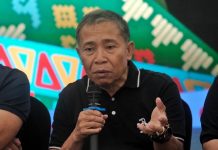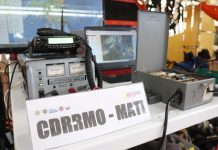Davao City is synonymous to the Dutertes.
Former city mayor Rodrigo Duterte, Sara Duterte, and current Mayor Sebastian “Baste” Duterte even shared one thing in common — they made clear to everyone their top goals for Davao City, from growing the economy to improving health condition to ensuring security and safety to addressing social issues.
These issues are critical for the operations of the city, for economic development, and for livability.
The Dutertes focused on the issues that matter because for them Dabawenyos matter. They ensured that Dabawenyos thrive in the city to live and work without fear.
By supporting and leading the implementations of the ordinances that not only make difference to Dabawenyos but also put Davao City on the map.
Among the landmark legislations of Davao City are as follows:
1. The liquor ban ordinance, which is implemented city-wide from 1 p.m. until 8 a.m. Any person of legal age or any establishment that violates any of the provisions of the proposed law shall be punished by a fine of P50,000 or imprisonment of not more than three months.
2. The Anti-Smoking Ordinance of Davao City which prohibits smoking in public places. However, smoking is allowed in designated smoking areas (DSAs), which must be located at least 10 meters away from entrances and exits of establishments. Under the amended law, violators of the said ordinance will be fined P2,000 for the first offense; P3,000 for the second offense; and P5,000 for the third offense and succeeding offenses.
3. The Firecracker Ban which prohibits the possession, use, sale, manufacture and distribution of firecrackers and pyrotechnic devices within the city. Under the ordinance, first-time violators will be fined P1,000 or 20 to 30 days imprisonment or both; second-time offenders will be fined P3,000 or one to three months imprisonment or both; and third-time violators will be fined P5,000 or three to six months imprisonment or both.
4. The Anti-Discrimination Ordinance which declares as unlawful the acts and conduct of discrimination based on sex, gender identity, sexual orientation, race, color, descent, national or ethnic origin, and religious affiliation or beliefs. The ordinance also lists discrimination based on health status.
5. The Davao City Women Development Code of 1997, later amended as City Ordinance No. 1032-02 series of 2003, which ensures gender mainstreaming in Davao City through the integration of gender and development in all areas of local governance.
6. The Davao City Investment Incentive Code of 1994 which aims to encourage investments.
7. The Special Office for Children’s Concern ordinance which aims to beef up the capacity of all implementing agencies in realizing the provisions of the Davao City Children’s Welfare Code.
Davao City also passed Ordinance No. 0177-14 Series of 2014 or “An Ordinance Placing Underground all Electrical and Telecommunication Wires and Cables within the vicinity of City and the Sangguniang Panlungsod of the city of Davao,” which mandates all telecommunication companies and Davao Light and Power Company (DLPC) to convert overhead lines to an underground system.
“The 1987 Philippine Constitution says that the prime duty of the government is to serve and protect the people, precisely the reason why such landmark ordinances and/or regulations where enacted, bearing in mind the interest of the public in general and due process of law. To make sure that our actions will be guided and always be within the bounds of law,” said Vice Mayor J. Melchor Quitain Jr.
Accolades
In her SOCA in 2022, former Mayor Sara reported that the city has received 118 awards and citations that recognized the efforts of the city government of Davao in different facets of governance and service.
Davao City was feted the fourth Most Competitive Highly Urbanized City in the 2021 Cities and Municipalities Competitiveness Index (CMCI), which was the highest-ranking of any city outside of the National Capital Region.
The city has been consistent in landing the Top 5 list since 2015 due to continuous efforts in economic dynamism, government efficiency, infrastructure, and resiliency – known as the four pillars of competitiveness.
The Department of the Interior and Local Government (DILG) also regularly recognized the local government with the Seal of Good Local Governance and the Seal of Good Financial Housekeeping.
The city government of Davao bagged the Hall of Fame for the Most Child-Friendly City for Highly Urbanized Category after it won the same award six times: 1998, 1999, 2013, 2014, 2015, and 2017.
Davao City is also hailed as the Philippines’ safest city. In fact, a few years ago it was ranked as the second-most livable city in the nation. The city’s low crime rate and proactive attitude to safety are to credit for this.
Quitain said with these achievements, peace, progress and development being attributes of growth and prosperity, follow.
Infrastructure
Peace and order and safety and security are among the drivers that ushered in infrastructure projects.
In fact, in 2019, former Mayor Sara led the launching of the culture of security along with the Task Force Davao. Dabawenyos were also urged to make the “Culture of Security,” part of their lifestyle for a safer and more secured Davao City.
The culture of security is being propagated requiring the Dabawenyos to voluntarily inspect; report suspicious persons; remind each other of the city’s counter-terrorism policy; and participate in community defense systems.
During former president Rodrigo Duterte’s presidency, the national government poured various projects in Davao City, which includes the Samal Island-Davao City (SIDC) Connector Project, Mindanao Railway Project, Transport Modernization Program, Davao City Bypass Road Project with tunnel, Sasa Port Modernization Project- all of these are still a bit unclear to happen due to various hurdles, but one project that is close to happening is the Davao City Coastal Bypass Road Project.
The 17.33-kilometer coastal road project will cover Bago Aplaya to R. Castillo Street. Its construction started in 2017 and has faced delays due to the Covid-19 pandemic.
The project stretches from the Toril district in the southwestern part of Davao City to the downtown area.
The first segment of the Davao City Coastal Road from Bago Aplaya to Tulip Drive section by end of May this year as reported by Dean Ortiz, spokesperson of DPWH.
The coastal road is intended to provide an alternative route to the Pan-Philippine Highway in the southern part of the city, which has been experiencing heavy traffic congestion.
Davao City over the next 15 years
Fifteen years ago, Davao City was only known for Mt. Apo (even though it’s not really ours), Waling Waling flower, durian, pomelo, the Philippine Eagle, Kadayawan sa Davao and Araw ng Davao, 11 tribes, and the beaches (even though its all in Samal Island and it’s understandable because Davao City is just a gateway) as its main tourist attractions.
Fueled by rapid development with the presence of malls, convention center, and hotels, tourism in the city has flourished.
Jennifer Romero, officer-in-charge of the City Tourism Operations Office (CTOO), said the city is now envisioning for Davao City’s tourism for the next 15 years of Davao City as a destination that blends the preservation of its culture and traditions, natural wonders, and the development of modern infrastructure and sustainable practices.
“Hence, this 15 years in the making is a fruit of collaborations among government agencies, private enterprises, local stakeholders, and Dabawenyos that will be instrumental in realizing the vision for Davao City’s tourism masterplan,” she said.
Davao City is now considered as MICE (meetings incentives conference exhibitions) preferred destination in the country, Romero said the city is now gearing towards the city’s sustainable growth with more major events and activities held in Davao City, more investments in infrastructures, enhanced hospitality and accessibility providing tourists with world-class accommodations, dining, and entertainment options.
She said Davao City will also prioritize eco-tourism initiatives, forge partnerships with local communities, invest in infrastructure and hospitality, and collaborate with government agencies, private enterprises, and local stakeholders; by fostering a supportive environment for innovation and entrepreneurship, the city will witness the rise of unique tourism offerings, such as wellness retreats, agri-tourism experiences, and sustainable farm-to-table initiatives.
“Davao City will continue to be celebrated as the gateway to the mesmerizing landscapes of Mindanao. Thus, the beauty and uniqueness of cultural tourism and eco-tourism in the region will not only flourish in Davao City, it will also strengthen the diverse heritage of its people and will be showcased through vibrant festivals, traditional arts and crafts, and culinary delights,” she said.
Davao City is now being poised to become a thriving hub of tourism over the next 15 years.
“Captivating the world with its unparalleled beauty, rich culture, and extraordinary experiences,” Romero said.






